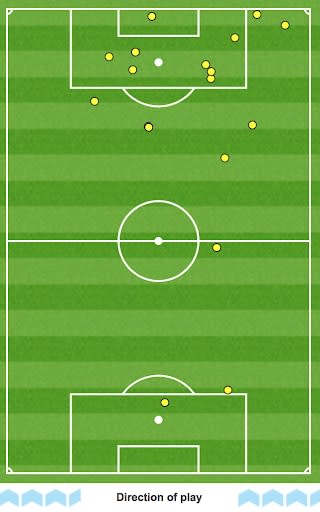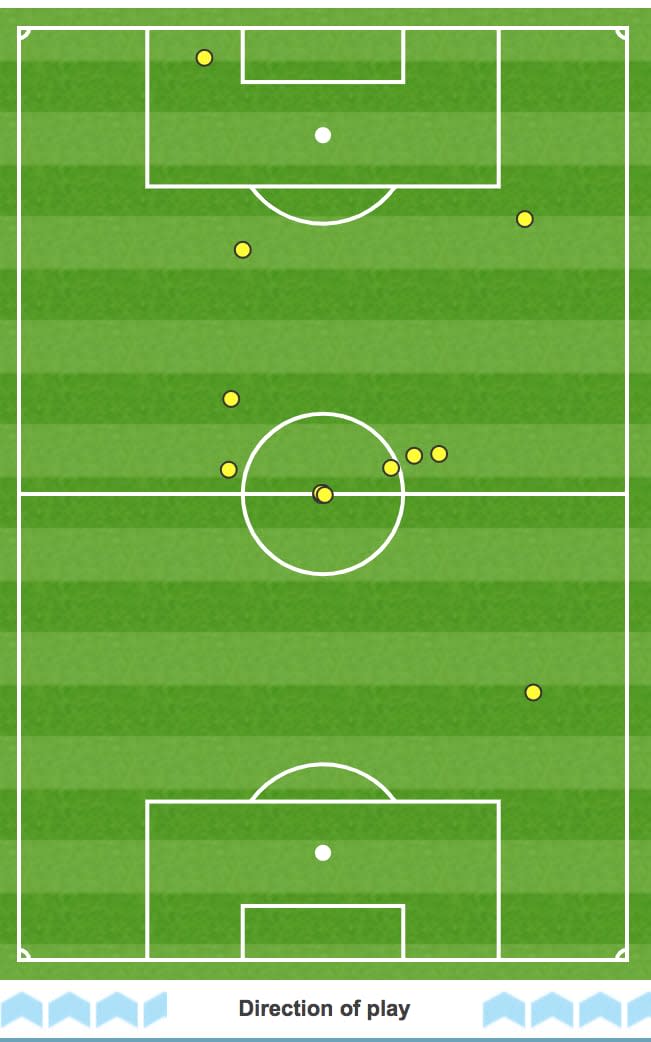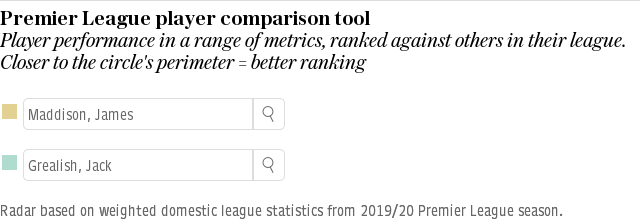What is wrong with Leicester and why are they in such bad form?

The 'wobble' started in December. Unsurprising defeats to Manchester City and Liverpool meant Leicester lost their lofty second position in the table, a hectic fixture schedule resulted in injuries to key players, opponents adapted their approach to Brendan Rodgers' system, he adjusted his in turn, a dip in form followed, and now that Champions League qualification place which seemed certain months ago depends on winning the next three matches.
So, what's gone wrong at Leicester?
Injuries to key players
Wilfred Ndidi has been the secret behind the success of the team this season, playing the midfield anchor role in Rodgers' 4-1-4-1 system that links defence to midfield and allows creative forwards to experiment with something of a safety net.
The injury Ndidi picked up during training in early January during a run of six matches in 17 days (one every 2.8 days) had obvious knock-on effects to how Rodgers' system worked, denying the midfield of a ball-winner and the defence of a protector.
His statistics are reminiscent of what N'Golo Kante used to provide Leicester, a highly defensive, physical presence in the midfield who anticipates the game a couple of steps ahead. Only Ricardo Pereira has made more than his 112 tackles for Leicester, no player in the league has made more than his 73 interceptions, while Kasper Schmeichel is the only other player on the team close to his 244 recoveries made so far:

In an attacking, possession-based system like Leicester's, the biggest threat is from opposition counter-attacks - Ndidi is crucial to preventing these, as the 50 fouls he has conceded this season suggest.

“We’ve got some other really good players in our squad who can come in and do a job," said Rodgers of Ndidi in March. "But when you’re without one of the best players in that position in the league, he’s always going to be a miss.
“Some of the guys have come in and done fantastic, and we’ve won games without Wilf, but just in general, he’s irrepressible and what he gives the team and what he allows the others to be able to do."
Ricardo Pereira has been another huge miss for Leicester. As well as scoring three goals and providing two assists this season, Pereira has made more tackles per 90 than any player in the league and his influence in both attacking and defensive phases cannot be understated.
A full-back who essentially plays as a right winger, his advanced position on the flank has allowed Ayoze Perez to move inside the pitch as a second striker to ensure Jamie Vardy cannot be marked out of games. James Justin is young, will improve, and looks ready for this level of football but he is not as good as Pereira, who is one of the best attacking full-backs in the league.
Ben Chilwell's form dipped around the time Ndidi picked up an injury - as did James Maddison and, basically, the entire team's - and with a lack of high quality replacements, Leicester's relatively small squad has suffered.
Jamie Vardy stopped scoring
Vardy currently leads the goalscoring charts despite going seven Premier League games in a row without a goal during that busy winter spell. That goal drought coincided with the injury to Ndidi (and the birth of Vardy's daughter in December) and Rodgers had to make tactical adjustments, realising a team dependent on one source of goals was one easy to keep quiet.
Additionally, a strong start to the season resulted in teams treating Leicester with the respect their league position deserved, which meant a deep defensive line, denying space for forward passes in central areas, and breaking quickly on the counter. Leicester have an average of 55 per cent possession, which naturally encourages opponents to play in this way.
Without space to run into, Vardy isn't as effective. He wants to run off the shoulder of the last man as seen here before scoring against Aston Villa:

This is the kind of position Vardy rarely finds as teams sit deep, but when an opponent is chasing an equaliser or trying to get back into the game they have to push forward, which leaves space for these devastating through-balls. Vardy sprints beyond the defence and finishes.
It's why Vardy is so dangerous against teams like Arsenal or Manchester City who also like to play with a high defensive line:

If the ball gets beyond the last man, Vardy is always ready to sprint onto it. Organised defenders are wise to the situation but might not have the pace to match, and managers instruct their players to prevent the pass being made in the first place. No striker has a 100 per cent success rate and so when the inevitable chance does arise, sometimes it comes to nothing.
This is relevant when considering how little Vardy actually touches the ball during a game. He averages 22.13 touches per game, fewer than Sergio Aguero's 25.13 and Michail Antonio's 40.76, and many fewer than Raheem Sterling's 54.03, to compare some other pacy forwards. It's what he does with those touches and where he gets them that is crucial as his touchmaps from the most recent 4-1 defeat to Bournemouth suggest.
In the first half he was able to get in behind the defence and sneak attack the blindside of oblivious centre-backs on numerous occasions:

But in the second half, as Bournemouth switched to a back three and abandoned any attempt of an offside trap, he was ineffective.

James Maddison's lack of output
Maddison has been tipped for a starring role in Gareth Southgate's England team because of his creative spark from a 10 position, playing a little bit like one of those Paul Gascoigne types that people so admire. The reality is that although an excellent passer of the ball, his creative output is nowhere near what is perceived to be the case.
Maddison has created the third most chances (including assists) of any player in the league per 90, behind only Kevin De Bruyne and Jack Grealish, an impressive statistic spoiled when focusing only on chances created in open play. Take away the chances Maddison has created from corners and free kicks and Cesar Azpilicueta (40) and team-mate Youri Tielemans (42) have produced more goalscoring opportunities than Maddison's 38. Jack Grealish, a rival for that same position for England, has created 69 chances from open play for an inferior team battling relegation. Grealish has seven goals and six assists, Maddison has six goals and three assists.

There are more similarities between Maddison and Grealish. Both are targeted by opposition managers to minimize their creative influence on matches with a cunning tactic: fouling them repeatedly. Grealish is the most fouled player in the league with 4.82 won per 90, Wilf Zaha is second on 3.17 per game, and Maddison is third on 2.84 per game. His actual role in Rodgers' team is facilitating fluid passing moves and providing a threat from set pieces that he usually wins.

The important thing to take from this is that although a hugely talented individual player, Maddison is not Kevin De Bruyne, and should not be expected to decide matches as such.
Change in system
Leicester were second after 18 games, third after 19, and Rodgers started tweaking his system soon after. The injury to Ndidi meant a loss of control in midfield, Vardy's struggles to score suggested Kelechi Iheanacho should be given a chance, and Leicester began using 3-5-2 and 3-4-1-2 shapes. The style remained the same: the team pressed high, favoured possession, played line-breaking passes with plenty of off-the-ball movement, and tried to dominate games, but it hasn't quite clicked.
Experiments with a 4-4-2 diamond have also failed to produce the sorts of performances seen earlier in the season, suggesting that attempts to freshen things up were unnecessary and disruptive. However, opposition teams had figured out how to keep Vardy quiet, Ndidi's injury was a massive loss to absorb, and the flurry of fixtures meant squad rotation was essential. Rodgers had to change something.
Furthermore, the underlying statistics suggest that far from suffering a loss of form, Leicester are essentially balancing out after over-performing for much of the season.

Since New Year's Day Leicester have played 14 games, won three, drawn five, and lost six. Now they are struggling to find form under the pressure of a resurgent Manchester United and against a Chelsea squad littered with star players.
Ndidi is back and Vardy is scoring, but Chilwell, Pereira and Maddison are missing through injury at exactly the wrong time, and without their strongest XI, Leicester aren't as good as others around them. Fortunately, Southampton's late equaliser against Manchester United means winning the last three games of the season will secure Champions League football for Rodgers. All he has to do now is find a way to make that happen.

 Yahoo News
Yahoo News 
